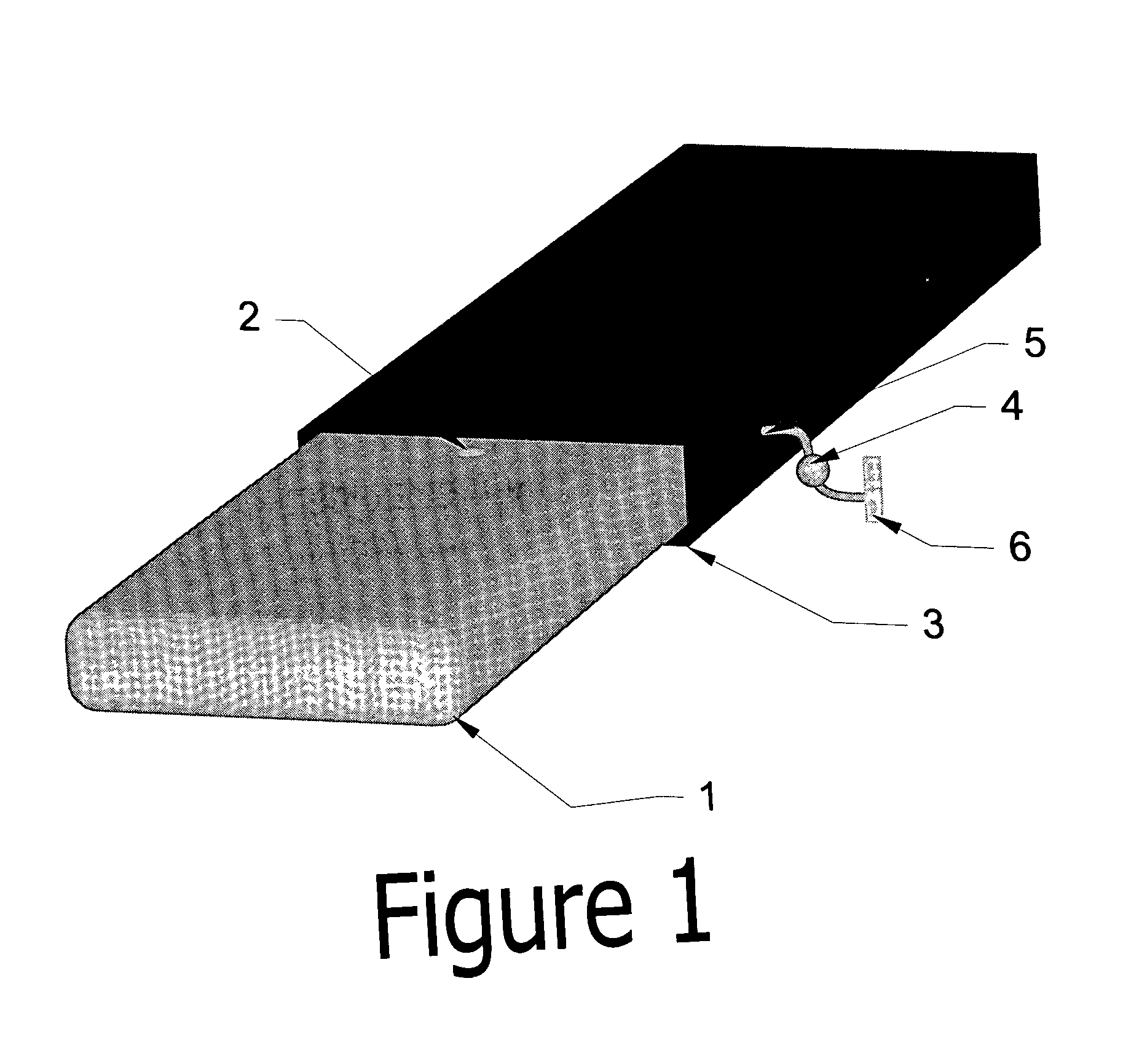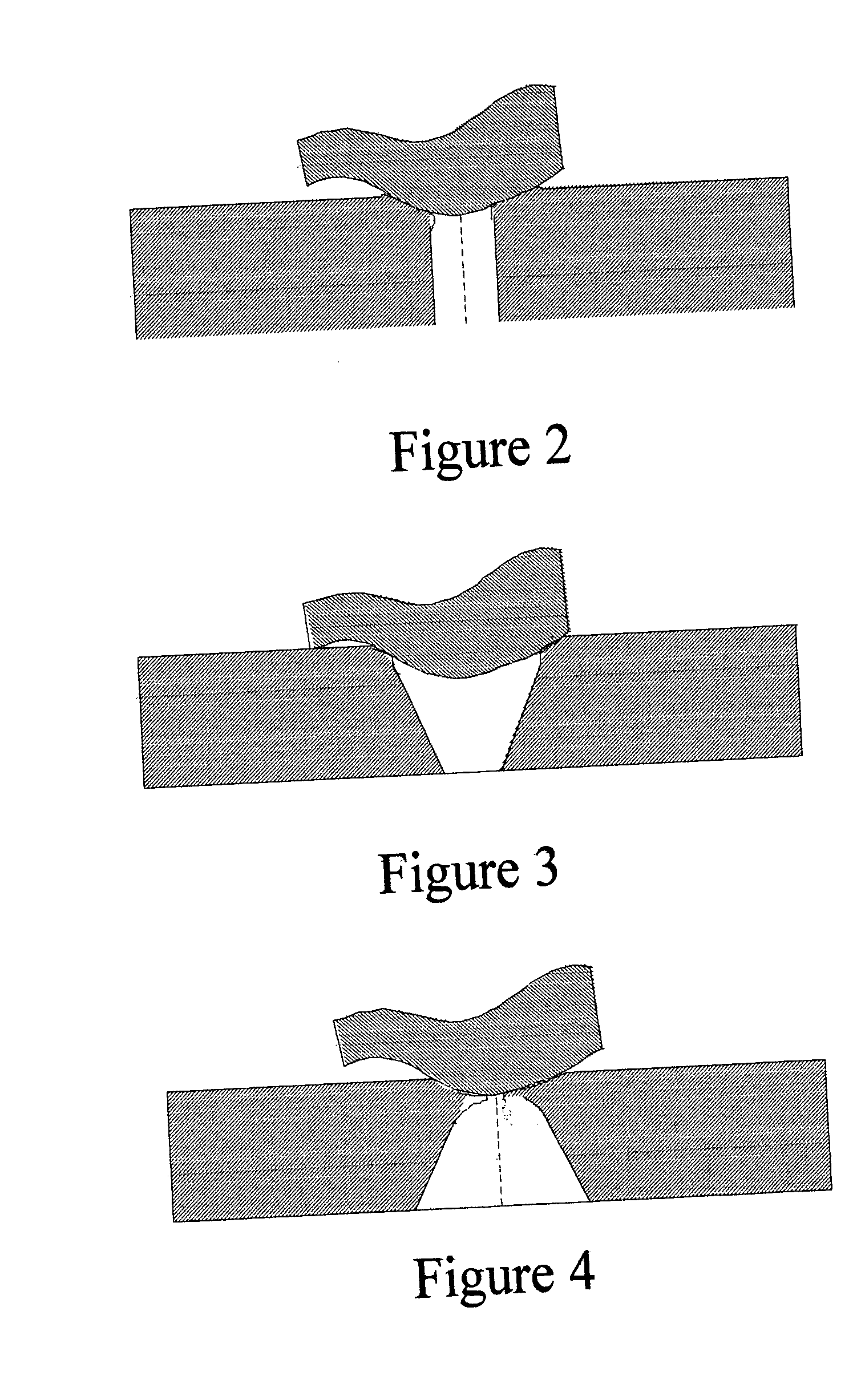Methods and devices for reducing stress concentration when supporting a body
a technology of stress concentration and supporting body, which is applied in the field of methods and devices for reducing stress concentration when supporting a body, can solve the problems of insufficient implementation of most schemes, discomfort and possible injury, and achieve the effect of reducing discomfort and injury, minimizing or eliminating any localized concentration of stress
- Summary
- Abstract
- Description
- Claims
- Application Information
AI Technical Summary
Benefits of technology
Problems solved by technology
Method used
Image
Examples
Embodiment Construction
[0054] The basic features of the invention can be seen in FIG. 1. A foam pad 1 of any size or shape, containing one or more cutouts 2, is inserted into a closely fitting airtight bladder 3. A valve 4, is affixed to an opening 5, and an optional pumping means 6, for pressurizing or evacuating the bladder may be attached. It should be noted that the shape of the pad in FIG. 1 is for demonstration only and that the pad may also be in the shape of a torus, a circle, or a square for example, with a rectangular, or other-shaped center portion removed, or for that matter, any suitable body supporting shape.
[0055] As demonstrated by Rogers (inventor herein), U.S. Pat. No. 5,048,137, the deformation of a foam mattress around an opening through the foam in the form of a truncated upright cone (small radius at top) or bell-shaped, is such that the material around the edges of the opening tends to “roll” into the cavity when a load is placed upon the portion of the mattress containing the cut-...
PUM
 Login to View More
Login to View More Abstract
Description
Claims
Application Information
 Login to View More
Login to View More - R&D
- Intellectual Property
- Life Sciences
- Materials
- Tech Scout
- Unparalleled Data Quality
- Higher Quality Content
- 60% Fewer Hallucinations
Browse by: Latest US Patents, China's latest patents, Technical Efficacy Thesaurus, Application Domain, Technology Topic, Popular Technical Reports.
© 2025 PatSnap. All rights reserved.Legal|Privacy policy|Modern Slavery Act Transparency Statement|Sitemap|About US| Contact US: help@patsnap.com



